A coastal city in Croatia that becomes more popular each year – here are the top things to do in Šibenik Croatia.
A coastal city that has endured nearly a millennium of scorching temperatures, sustaining a few wars, being beaten by the waves and whipped by relentless winds, Šibenik remains as vibrant as ever. How did it survive?
For one, its residents are incredibly resilient, for neither war nor climatic events could prevent them from saving and, if necessary, rebuilding their city. Second, the entire city is made of stone, which, of course, helps a lot.
Šibenik consists of stone buildings, stone stairways, rock cliffs, cobbled streets, and stone arches. It is built on rocks and constructed with rocks. Šibenik is a city of sun, sea, and stone, a unique combination of characteristics that make this beautiful city unlike any other in Croatia.
Additionally, this proud city is the only one on the Croatian coast built by Croats—Split and Dubrovnik, for example, were founded by other cultures.
As the third-largest city in Dalmatia, Šibenik makes a strongly recommended destination on this spectacular stretch of Adriatic coastline. This city is filled with incredible historical sites, beautiful seaside hang-outs, and quaint alleys and squares—just what you may expect from a medieval coastal city in Croatia.
Skip Ahead To My Advice Here!
Explore the Old Town
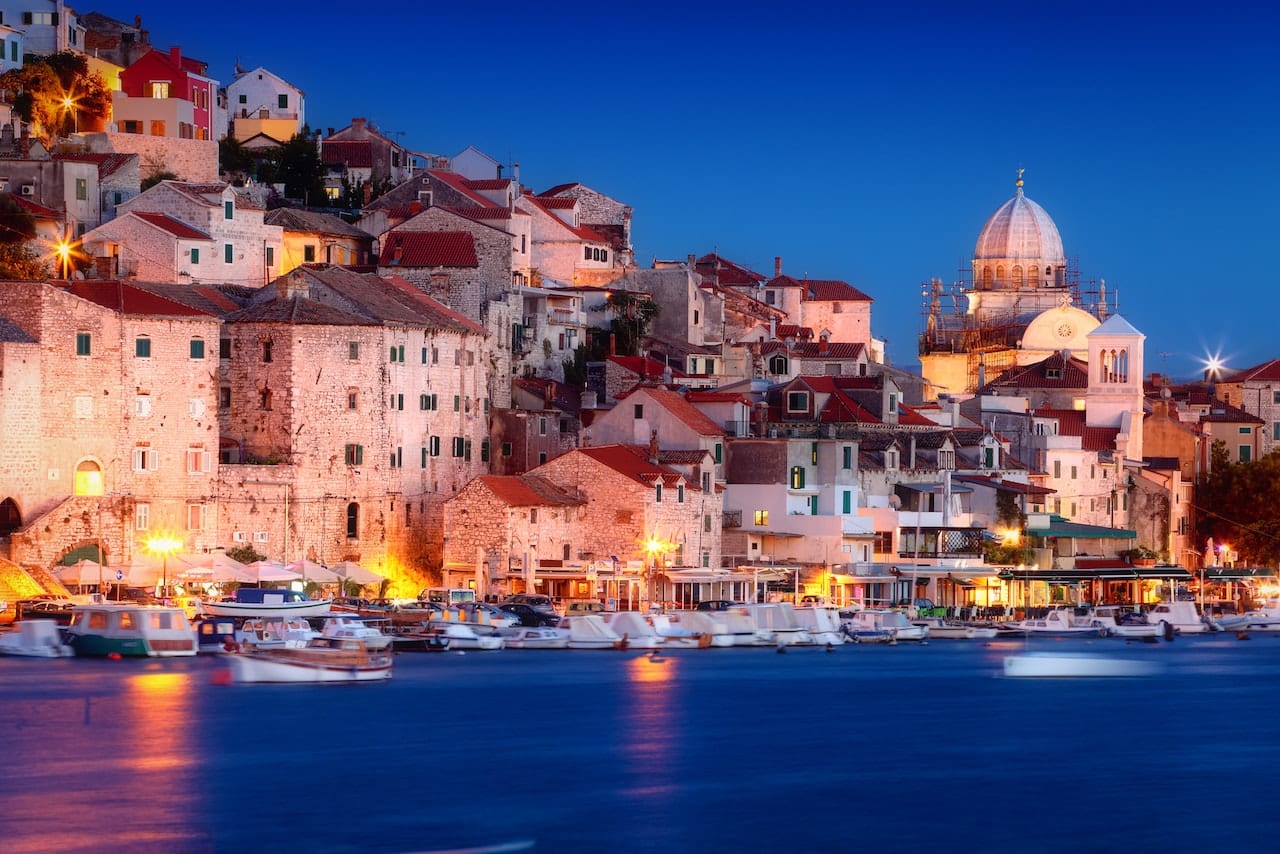
Sibenik’s Old Town is a beautiful place to explore, and it’s almost like a maze of narrow, cobbled streets. You’ll find small shops, cafes, and old buildings everywhere you turn, and getting a little lost will always lead to finding something amazing. Sibenik City Museum and the National Theater are both situated in the Old Town and are great spots to check out.
So grab yourself a room at one of these incredible accommodations in Šibenik, then head out to see these sights!
City Hall
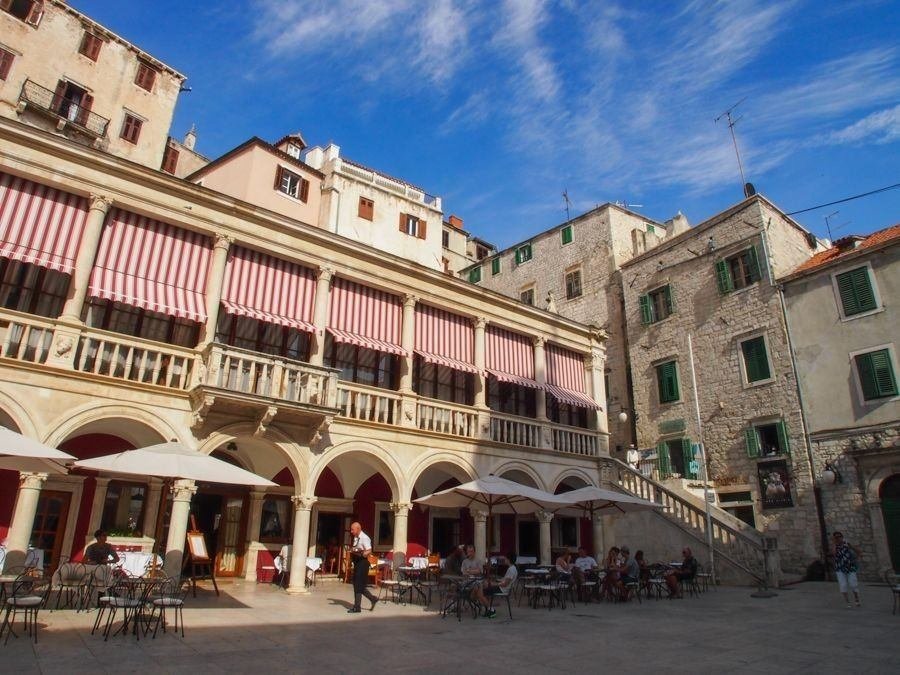
A strikingly harmonious Renaissance building situated on the Republic of Croatia’s medieval Square in the very heart of the city, the City Hall of Šibenik, was constructed between 1533 and 1546. Its beautiful façade comprises columns and arches, a balustrade, and a balcony. The ground floor is home to a beautiful local restaurant, and the outside terrace provides an extraordinary view of the Cathedral of St. James (see below).
Although the City Hall was entirely leveled during an Allied air raid in 1943, it was meticulously rebuilt and now looks exactly like it did before World War II.
Krka National Park
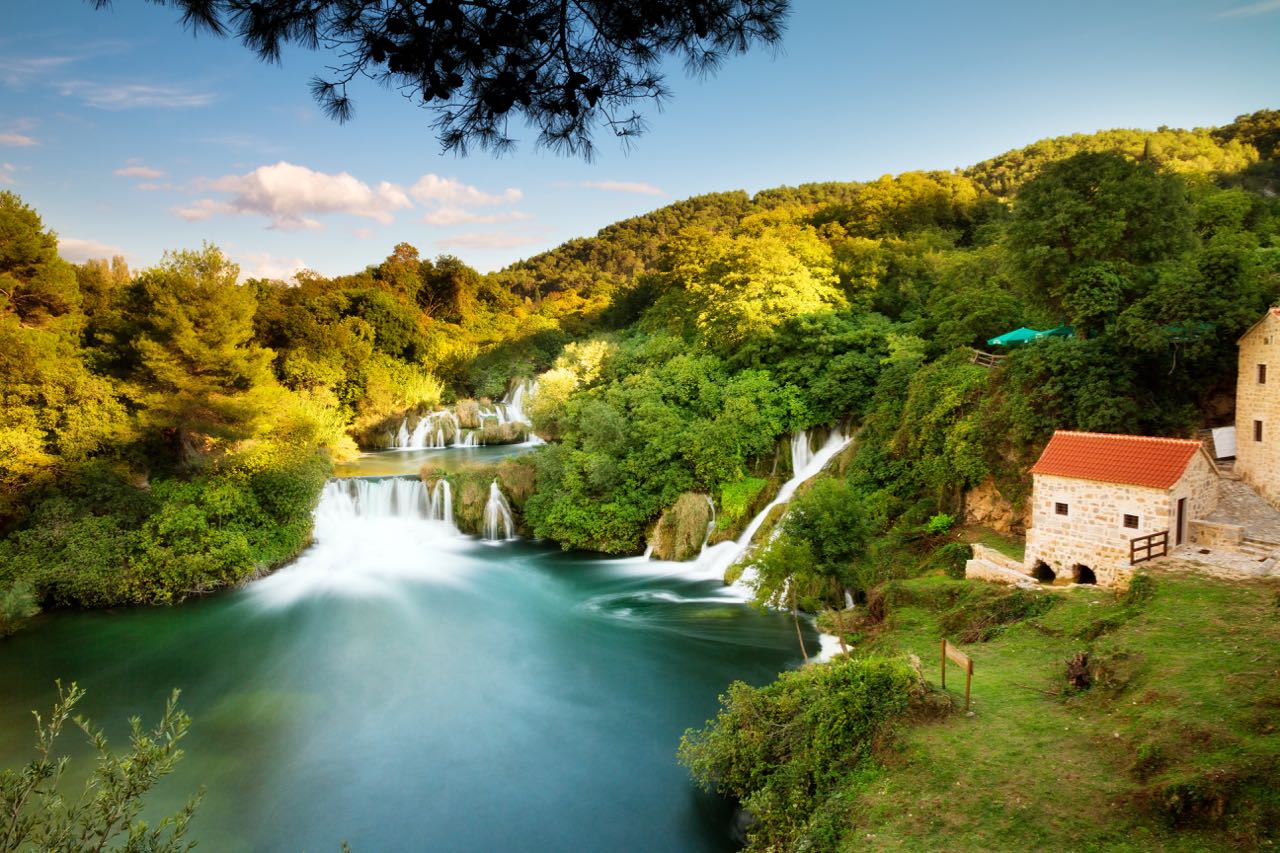
Not technically located within Šibenik, but definitely close enough to be considered a local highlight, Krka National Park lies merely a few kilometers to the city’s northeast—about 15 minutes by car from the city center.
This superb national park protects a section of the Krka River and the woods that occupy its banks. It is truly exceptional because it’s a national park for more than one reason—the many activities in the park range from educational and scientific to recreational, touristic, and cultural.
What sets this park apart is its large number of waterfalls and cascades, most notably Skradinski Buk. Krka National Park’s star attraction, this downright spectacular waterfall, can be seen on boardwalks that encircle it—and lead visitors past, over, and along many other waterfalls, streams, and lakes.
Moreover, you can swim in the natural pond underneath the waterfall, which is absolutely amazing—swimming is, for example, not allowed anywhere in Plitvice Lakes National Park, a similar but more famous and more popular Croatian national park.
There are a few entrances to Krka National Park, but the recommended one—that is, the one closest to Skradinski Buk—is the Lozovac entrance. The entry is clearly signposted along all approaching roads, the main one of which is the A1 expressway. There’s free parking.
Stone Streets and Quaint Squares
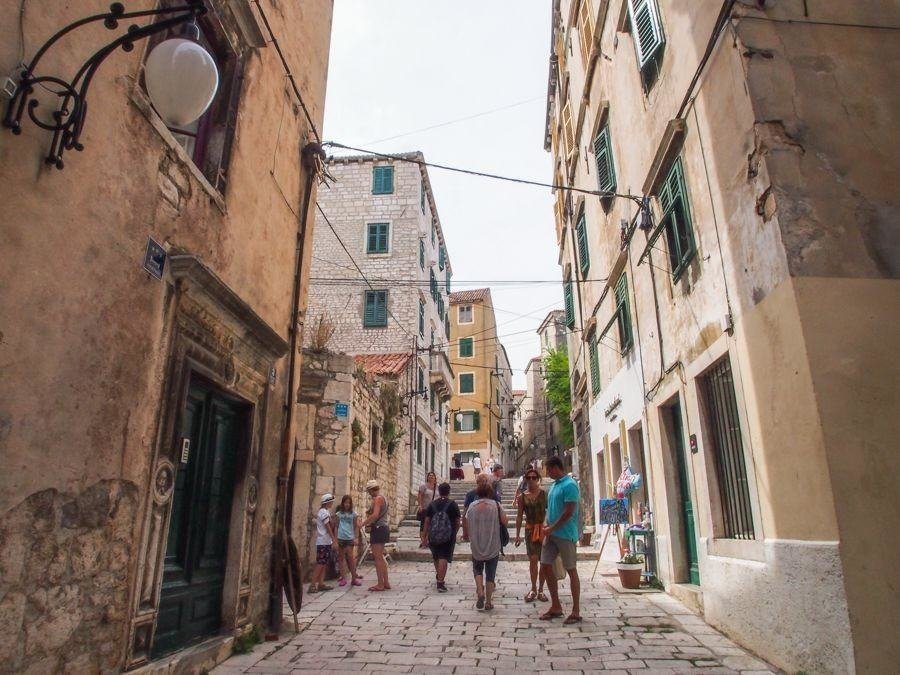
A fun thing to do in Šibenik is walking around aimlessly. Its medieval heart is completely car-free—the streets and alleys are too narrow for car traffic—and allows people to explore, discover, and wander at their leisure. The historic city center comprises a few different areas, known as Grad, Dolac, and Gorica, which all neighbor one another.
These areas are chock-full of historic sites, ranging from ancient churches to palaces and mansions to townhouses.
Everything, of course, is made from stone. A maze of paved and cobbled streets connects all these attractions; sometimes, the roads pass underneath a beautiful arch or even through a tunnel. Because the city was built on a rocky coastal area, there are some elevation changes as well, which are conquered by—you guessed it—stone stairways.
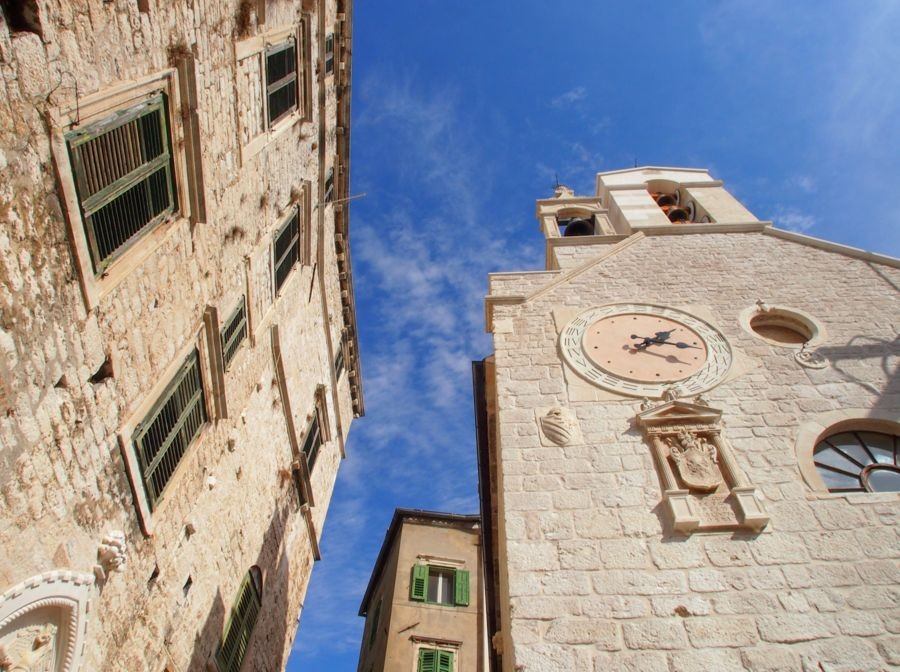
Brands We Use And Trust
Four Fortresses
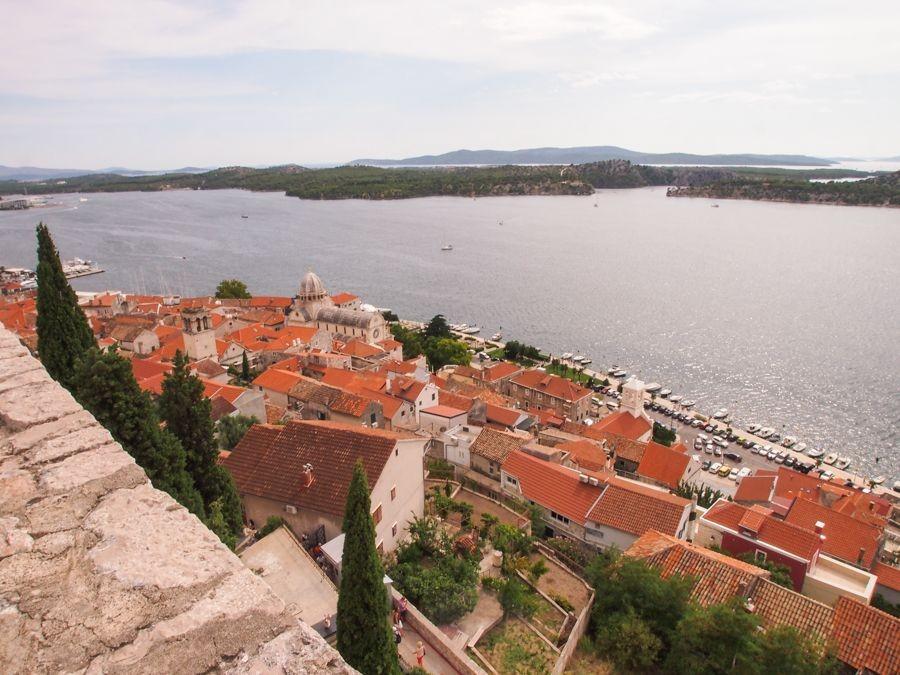
Šibenik has always had a strategic position in the Adriatic Sea. This military advantage made it a much-desired city by the larger Mediterranean powers. The city rulers anticipated that and erected several mighty fortresses, built fortified city walls, and constructed commanding towers. Nowadays, the fortresses are the best-preserved remains of this once-mighty fortification system.
There are four fortresses in the city of Šibenik—the Fortresses of St. Nicholas, St. John, and St. Michael, and the Fortress Šubićevac—all of which were built between the 15th and 17th centuries.
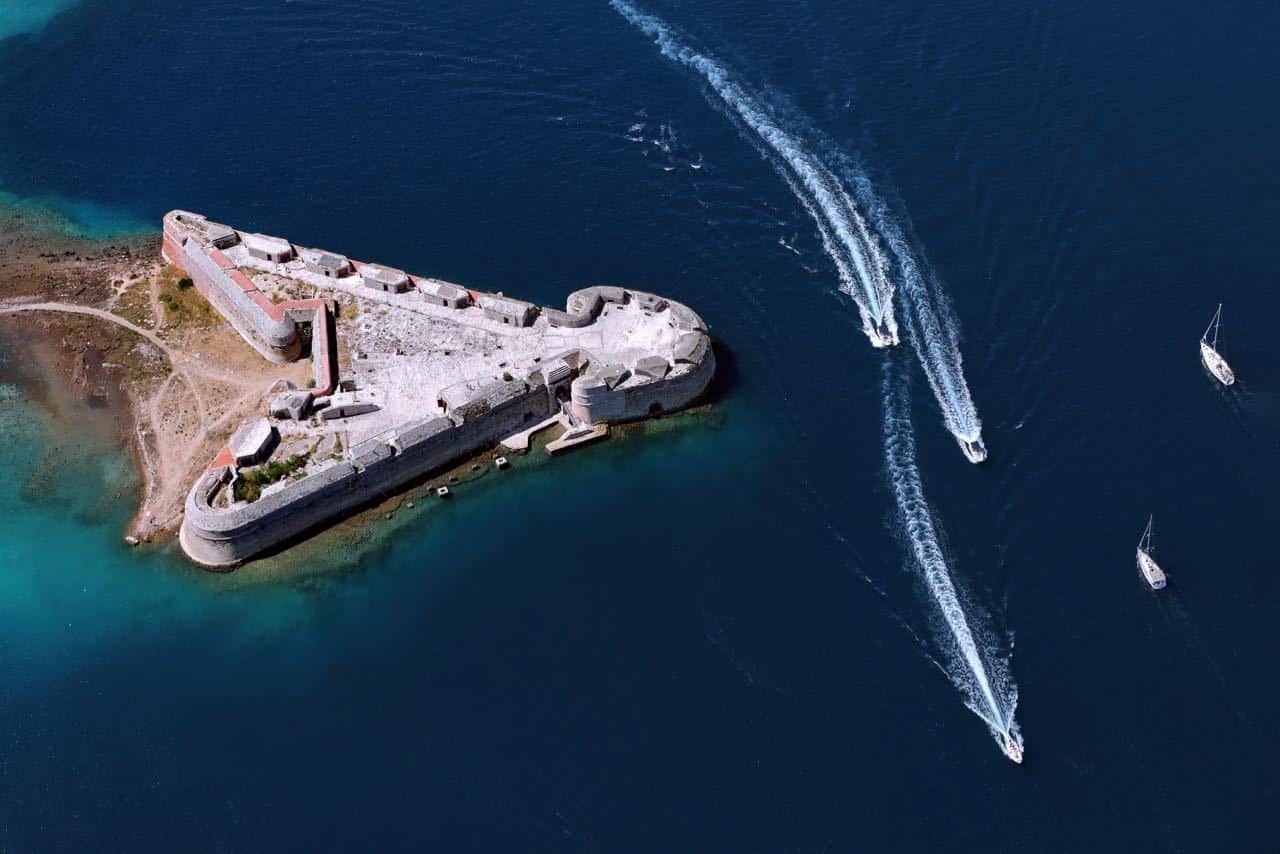
While they are all definitely worth visiting, the Fortress of St. Michael is imposing because it houses a concert and theater venue at its top. Overlooking Šibenik and the islands in the Adriatic Sea, it is one of the most scenic places to attend a performance in Croatia.
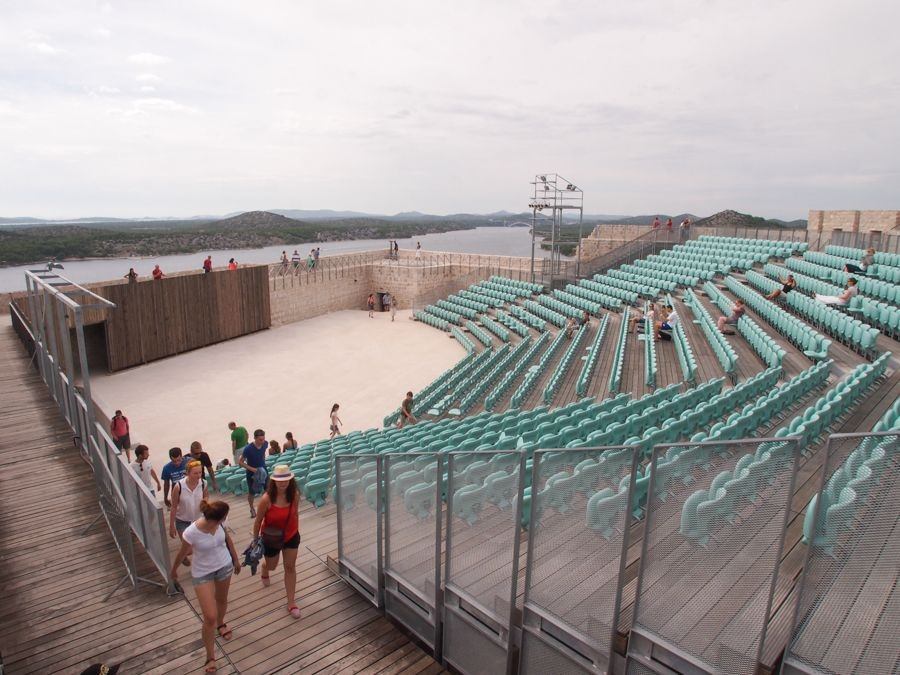
Cathedral of St. James
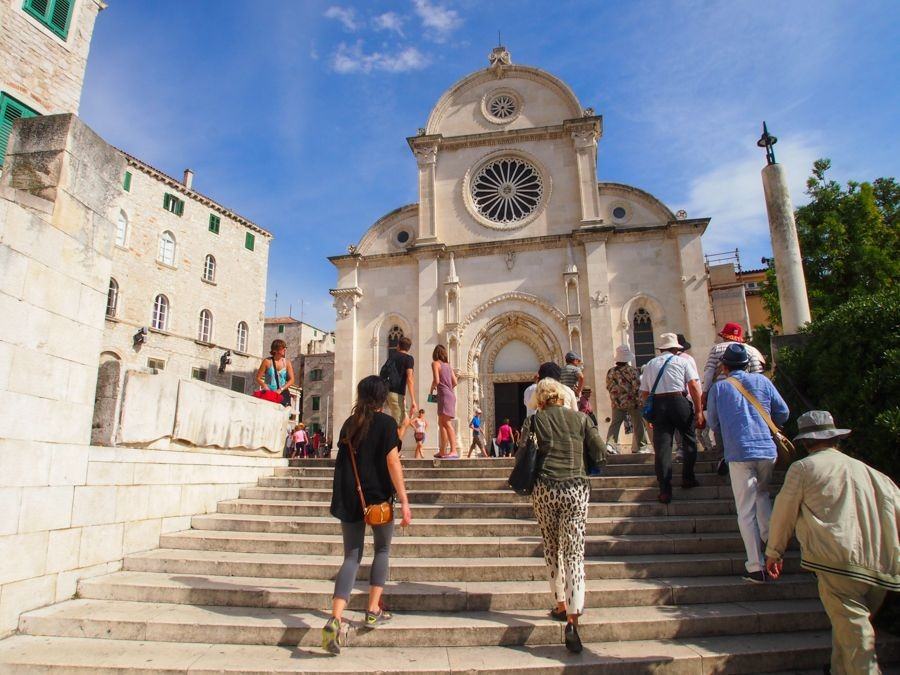
The number one attraction in Šibenik is the Cathedral of St. James. A stunning and stylish building, this magnificent cathedral was built in the 15th and 16th centuries and can be said to be one of the most significant monumental cathedrals in Europe. It wouldn’t be Šibenik if its cathedral weren’t built entirely from stone—in fact, it is the only cathedral in Europe constructed with only stone. And did you know it was featured on Game of Thrones?
It was also the very first structure in Europe to be constructed with inter-grooved stones. And that’s not all. The Cathedral of St. James is also the only European building whose interior shape corresponds entirely with its exterior features. It would by no means be a stretch to state that the Cathedral of St. James can be considered to be the most important Renaissance building in Croatia.
It is truly an absolutely extraordinary building, a vast stone monument that is one of the top sights on the entire Dalmatian coast. UNESCO recognized this cathedral’s cultural, architectural, and historical significance when it declared it a World Heritage site in 2000.
Spend Time at The Best Beaches
Banj Beach is the closest beach to the center of town, at around 1km distance away. This is a pebbly beach, but the water is very clear and calm and great for swimming. There is a restaurant at the beach so that you can grab some refreshments and an ice cream. You can also rent sun loungers and parasols; however, it’s best to get there early if you want to bag a good sun lounger.
Game of Thrones Tour
![]()
You might recognize some of Sibenik before you even go, and if you’re a Game of Thrones fan, that’s why. Many sites around this area were used for filming the hit show, including St John’s Fortress and the Cathedral of St James. You’ll find many walking tours which show you these famous filming spots, and it’s a great way to see more of the local area too.
St Ana Cemetery
It might sound a little depressing to visit a cemetery, but this spot is so peaceful and natural it should definitely be on your list. The views over the sea are stunning, and it’s a great place to sit and feel the tranquility of life.
St Lawrence Monastery & Cave Grotto
St Lawrence Monastery should be another spot you head to, and the gardens around the monastery are so beautiful. There is a cafe in the gardens, and you can sit and enjoy the peace and quiet. Also, within this complex, you’ll find a cave grotto and a statue of Mary inside.
A Day Trip to Kornati National Park
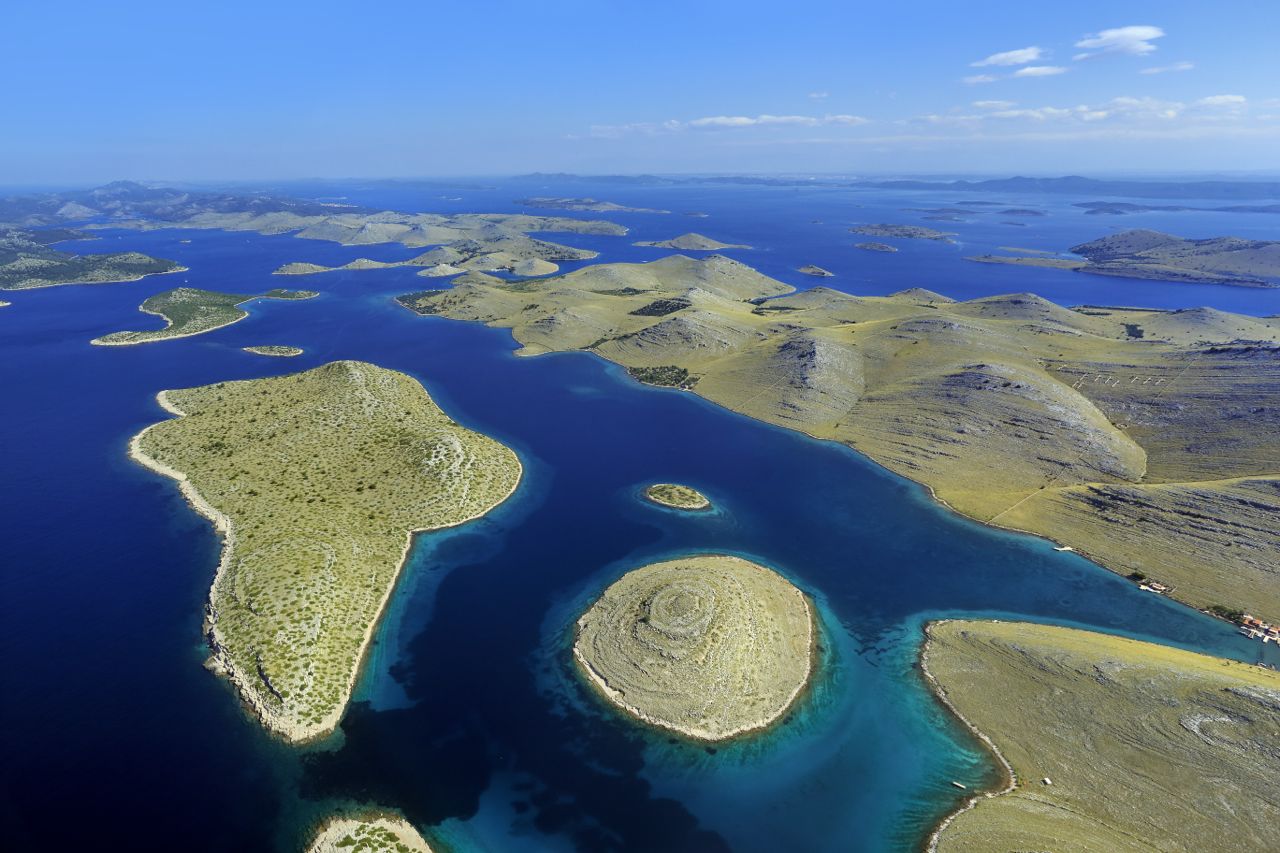
Sailing around the countless islands in Kornati National Park is a beautiful way to spend the day or maybe a few days. You’ll find many tours on offer, either as a group or a private option. You can also snorkel around this area, as the water is extremely clear and there is abundant marine life.
Sibenik Marina & Riva
The marina is a great spot to walk and check out the huge boats moored up. There are many cafes and restaurants to stop for refreshments and lots of ice cream stalls, too. The promenade is called the Riva, and this is where you can see amazing sunsets.
Cikola Canyon Ziplining
Just outside of Sibenik, you’ll find this beautiful canyon, which is extremely deep and ideal for a spot of adrenaline-boosting ziplining. There are various lengths to try, starting at 200 meters and going up to 650 meters. Of course, it’s not for people who aren’t into heights, but it’s a real thrill, and the views are amazing.
Explore Šibenik’s Localities & Islands
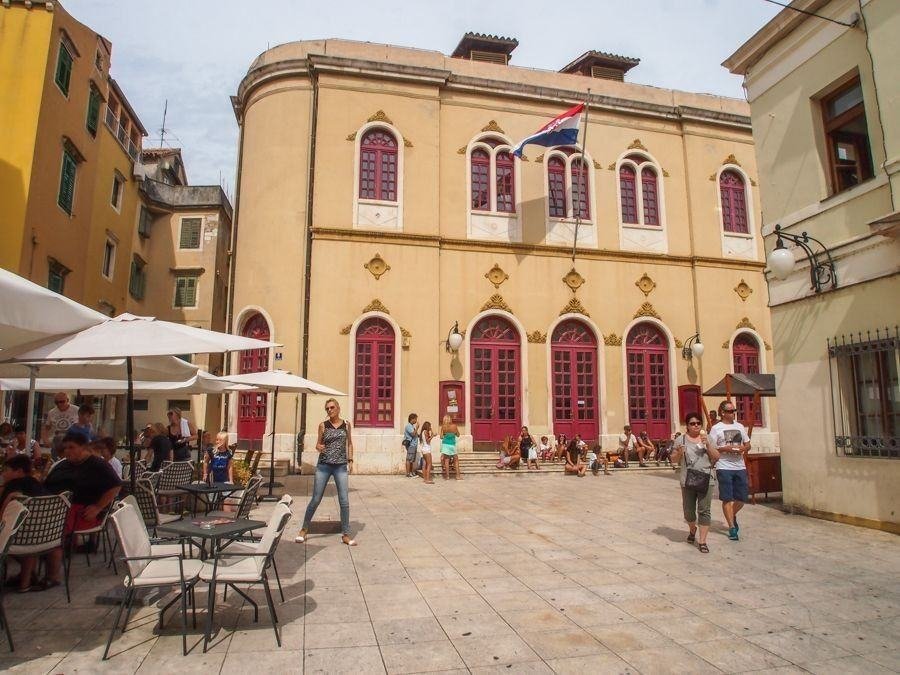
There is an abundance of things to see in Šibenik out of the old town, and it has loads of great places to stay, making it a great place to spend a few days.
The whole Šibenik-Knin region offers various destinations with beaches, islands, cafe bars, restaurants, festivals, and events.
There are about 20 historic towns along the coast. The better-known ones include:
- Pirovac
- Tribunj
- Vodice
- Brodarica
- Primošten
- Rogoznica
Plus, the three largest inland towns in the Dalmatian hinterland are:
- Skradin
- Drniš
- Knin
Many islands, many close to the mainland, make Šibenik a lovely place for sailing. Six islands are inhabited, car-free (suitable for bike riding), and accessible by ferry, except Murter, which is connected to the mainland via a moveable bridge.
The islands are:
- Murter has four towns (historic settlements): Tisno, Jezera, Betina, and Murter is the gateway to the Kornati National Park
- Prvić has two settlements, Šepurine and Luka
- Zlarin, known for its red Adriatic coral harvested by locals
- Krapanj, home to an old monastery and famed for natural sea sponge harvested by free divers
- Kaprije, the Croatian word for caper, is a sailing paradise
- Žirje, the Croatian word for acorn) is the furthest island from Šibenik’s coastline, with bays and inlets ideal for sailing
Move This Adventure To Your Inbox & Get An Instant Freebie

No spam. Unsubscribe at any time.
What Makes Šibenik Unique
As you might expect, the rich culture, history, natural wonders, beautiful beaches, and hundreds of islands provide many things to do in the Šibenik region. Šibenik shares some of its natural landscapes with the neighboring Zadar and Split counties. How is it different from its Dalmatian counterparts, like Zadar, Split, and Dubrovnik?
For starters, it’s blessed with:
- Krka and Kornati National Parks
- Lake Vrana Nature Park
- Dinara mountain peak, Croatia’s highest mountain
- Rivers Krka and Cetina and a section of the Zrmanja River
- UNESCO World Heritage site St James Cathedral (Sv Jakov)
- UNESCO World Heritage list tentative nominee, the vineyards of Primošten with their indigenous Babić grape varietal
- Natural wonders, including the Cetina Spring, the source of the Cetina River
- Monasteries, churches, and museums
- Historical and archeological sites
- Folklore, cultural events, and festivals
The Šibenik region is home to 14 fortifications and fortresses:
- The City of Šibenik alone has four
- The banks of the Krka River hold seven from medieval times
- The medieval Knin fortress, a historic home to Croatian kings and nobility
- The Byzantium fortress on the Kornati islands
- The remains of a Roman military camp and amphitheater, Burnum
How To Get To Sibenik
One thing I love about Šibenik is that it’s perfectly central. I find most people I know agree. Šibenik has a central bus station that is well connected to other bus ports nationwide. Buses are really easy to get around on if you don’t have a car.
From Šibenik, Skradin and the entrance to Krka National Park’s main waterfalls (Skradinski Buk) are half an hour away inland by car. Via the A1 (also called the E65):
By car, it takes:
- Split and its main ferry port, with access to all the southern islands, is an hour’s drive south
- Zadar is under an hour north
- Zagreb is 3.5 hours north (east)
- Rijeka is 3.5 hours north (west)
- Dubrovnik is 3.5 hours south
Fly: The closest airport to Sibenik is Split Airport, which is located 56 kilometers away. You can also find cheaper flights to Zadar Airport – which is 80 kilometers away. Once at the airport, your best option for getting to Sibenik is renting a car and driving or hiring a private transfer.
Bus: Intercity buses are very accessible in Croatia. Wherever you are in the country, you’ll be able to reach Sibenik by bus.
Did we miss your favorite spot in Šibenik? If so, what other things to do in Šibenik would you suggest to anyone going there?


I’m really hopeful that I can visit Croatia in the very near future. Very happy to have stumbled onto your website. Sibenik looks like a truly awesome place and yet another reason Croatia will likely explode with tourism in the near future. Thanks for sharing this and for giving me another reason to go!
I ❤ my Šibenik!
Game of Trone Tour ☺ a lot of the filming are from Sibenik.
Been there, it is impressive.
Been there. ❤️❤️❤️❤️
Done it all
That’s in Primosten!
Aaaaaaaah….moje selo….?
And home to Maksim Mrvica, Croatia’s World renowned Crossover Concert Pianist! Part of my dream is to see him perform in his hometown, preferably the St Michael’s Fortress, but I’ll go see him anywhere. ?
Magnific! Have been there 4-5 times! A MUST do! <3
I never knew that you could swin there. I hope they keep it clean!!
My mom just visted Sibenik and Krka for the 1st time and love it
Dovoljna je i jedna stvar a to je Krka
No.1- Eat sarma, grah and drink Karlovačko!
My favourite town in Dalmatia after Dubrovnik . A real gem. I just hope the developers keep the old world charm rather than ruining it with modern hotels and apartments in and around the old town
My daughter Dana and I travelled to Sibenik just last month from Australia. We only had 4 nights. First mistake we made was we didn’t stay in the grad (town) it would have been so much easier. We had the crazy weather thunderstorms/cold then unexpectedly lovely! We stayed at the Niko Solaris Resort which was wonderful but out of the way. We only went into Sibenik town once and my mother was born there. We loved it and were sad as we expected to visit again on the last day but weather was bad. You really have to do your homework before going, they have many private apartments they rent out now. Last time I went was 37 years ago. Enjoy your time there and go out rain, hail or shine!
Next time you are near Sibenik, stop by for a glass of wine at our winery… cheers
Wow reading the comments , feel I am lucky as am visiting Sibenik in nine weeks with my partner reading all the comments only makes me wish it was sooner .